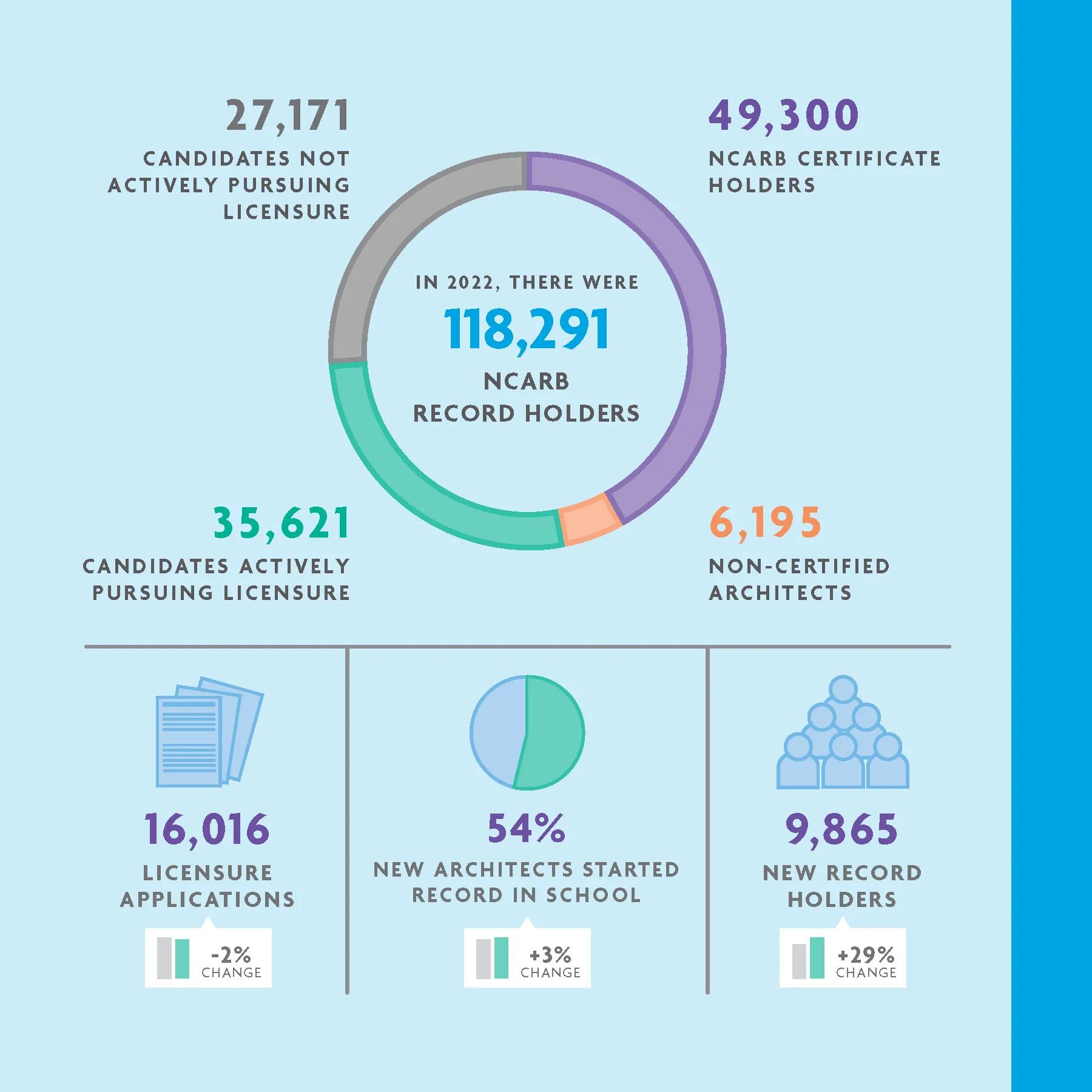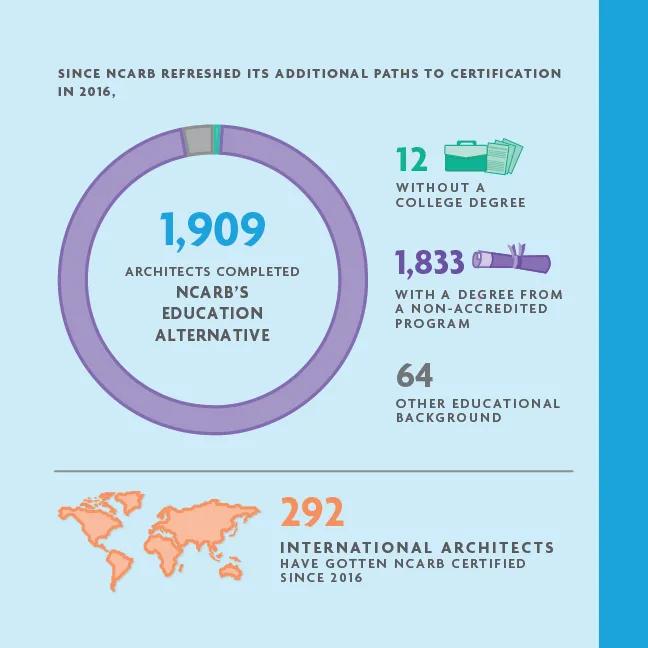
With 55 architectural licensing boards in the United States, each with its own rules and requirements, NCARB works to provide board support, encourage program alignment, and assist individuals seeking licensure.

NCARB’s community continued growing in 2022, with over 118,000 Record holders, more than 350 volunteers, and over 400 licensing board members. Our volunteer community—made up of architects, licensure candidates, educators, and experts from other professions—worked together across 23 committees continues to develop resources for licensing boards, explore challenges in the field architecture, and more.
Over 118,000 individuals held an active NCARB Record in 2022, a 3% increase compared to 2021. The majority of this growth was seen in the population of candidates actively pursuing licensure and the number of NCARB Certificate holders.
In 2022, over 49,000 architects held an active NCARB Certificate showing a 2% increase from 2021 and continuing to break record highs since. The number of Certificate holders has been steadily increasing over the past five years, with a slight lull in 2020 due to the pandemic.
The number of non-certified architects with an NCARB Record increased by 3% in 2022, to nearly 6,200 architects. This number has grown steadily since NCARB introduced updated pathways to pursue NCARB certification for architects who don’t hold a degree from a NAAB-accredited program or who are licensed internationally.
Over 9,800 candidates opened an NCARB Record in 2022—over 2,000 more than in 2021 (an increase of 29%) and the highest number seen since a spike in 2009. This continued growth signals a strong recovery from the dip caused by COVID-19’s onset in 2020.
NCARB considers creating an NCARB Record the first step on the path to licensure, as candidates need a Record to verify their education, document professional experience, and take the licensing exam.
The proportion of new architects who started their NCARB Record in school (54%) was at a record high in 2022, and has been gradually increasing since 2018. The remaining 46% waited until after earning their degree to start an NCARB Record, a 6 percentage point decrease from 2018.
Because NCARB considers starting a Record the first step to earning an architecture license, this trend could signal that more candidates are choosing to start the path to licensure earlier in life.
When candidates apply for an initial license or architects apply for a reciprocal (out-of-state) license, NCARB transmits their Records to the jurisdiction’s licensing board in support of their application.
The total number of transmittals fell 2%, from 16,336 in 2021 to 16,016 in 2022. Of the approximately 16,000 transmittals, more than 12,400 were in support of reciprocal licensure applications— remaining at an all-time high. While the number of initial licensure applications is still lower than those seen prior to the pandemic, the rise in the number of applications for reciprocal licensure indicates that the demand for professional mobility is stronger than ever.
